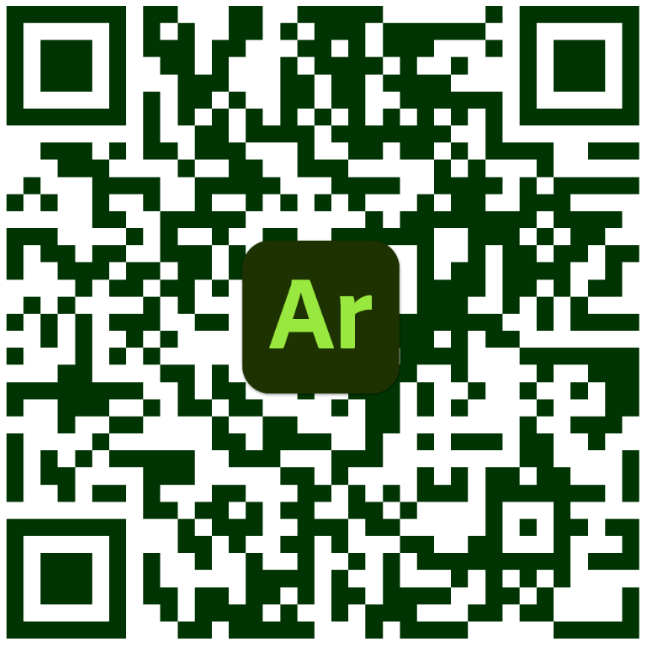NGSS Solar System AR
Greetings! I'm Yanni Chen, an enthusiastic professional committed to revolutionizing education by merging technology with impactful communication strategies. With a major in Public Relations and a Minor in Education from Boston University, I focus on creating accessible and engaging learning experiences. My expertise in education technology encompasses developing bilingual educational content, enhancing educational initiatives through strategic digital content creation, and leveraging storytelling to facilitate cross-cultural communication. Let's connect and explore innovative solutions for the future of education!
Scan the qr code above to open the solar system AR in your own space!
Discover the wonders of our Solar System with this immersive AR model. Designed for educational exploration, this interactive tool offers a close-up view of the planets, their unique characteristics, and their orbits around the Sun. Students can observe each planet’s relative size, distance, and motion, gaining a hands-on understanding of celestial mechanics and planetary relationships. Perfect for the classroom, this model brings space science to life, making abstract astronomical concepts accessible and engaging through augmented reality.
Classroom questions
Planetary Features: Using the AR model, observe each planet closely. What unique features do you notice about each one (e.g., rings, color, size)?
Distance and Scale: Based on the model, which planets are closest to the Sun, and which are the farthest? How does this affect their temperature and characteristics?
Orbital Motion: How does the speed of each planet’s orbit change based on its distance from the Sun? Why do some planets take longer to complete an orbit?
Planet Comparisons: Select two planets and compare their sizes, distances from the Sun, and known surface conditions. How might these differences affect the possibility of life on each planet?
The Sun's Influence: How does the Sun’s position and size affect the Solar System? What role does it play in keeping the planets in their orbits?
Classroom Activities
1. Planet Identification Challenge
Activity: Ask students to use the AR model to identify each planet based on specific clues such as color, rings, or size. Once identified, they will present interesting facts about their chosen planet to the class.
Objective: Enhance understanding of planetary characteristics and develop observational and research skills.
Discussion: How do the unique features of each planet help in their identification? Which planet's characteristics surprised you the most?
2. Orbit Exploration Exercise
Activity: Have students focus on the orbital paths of planets in the AR model, identifying patterns and noting how a planet’s distance from the Sun affects its year length. They will create a timeline of orbital periods for each planet.
Objective: Understand the relationship between a planet’s distance from the Sun and its orbital period.
Discussion: What patterns did you notice about the planets’ orbits? How does the distance from the Sun influence the length of a planet’s year?
3. Planetary Scale Model Creation
Activity: Using materials like balls, fruits, or illustrations, students will create a physical scale model of the planets’ sizes and distances from the Sun. The AR model serves as a reference for their designs.
Objective: Visualize the vast scale of the Solar System and understand relative planet sizes and distances.
Discussion: How does creating a physical model help you grasp the scale of the Solar System? What challenges did you encounter in representing both size and distance accurately?
4. Solar System Postcards
Activity: Allow students to “travel” to a planet of their choice using the AR model. They will create a postcard describing what they might see, feel, and experience on its surface, incorporating details from the model.
Objective: Foster creativity while applying knowledge of planetary characteristics.
Discussion: What unique features of your chosen planet did you highlight in your postcard? How do these features differ from Earth’s environment?
5. Temperature and Atmosphere Exploration
Activity: Using the AR model as a guide, students will choose a planet to research its temperature range, atmosphere composition, and weather phenomena. They will compare these conditions to Earth’s and discuss their impact on habitability.
Objective: Explore planetary environments and analyze factors affecting habitability.
Discussion: How do the atmospheric and temperature conditions of your planet compare to Earth’s? What factors make a planet habitable or uninhabitable?
6. Orbit Time Comparison
Activity: Challenge students to calculate their age on each planet based on that planet’s orbital period (year length). They will share their findings with the class and discuss how orbital speed and distance influence year length.
Objective: Explore the relationship between a planet’s orbit and time, making abstract concepts relatable and engaging.
Discussion: How did your age differ across planets? What does this tell you about the impact of orbital distance and speed on year length?


